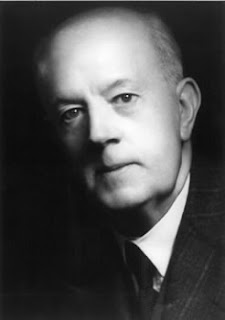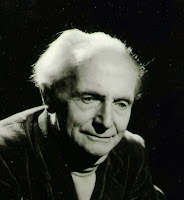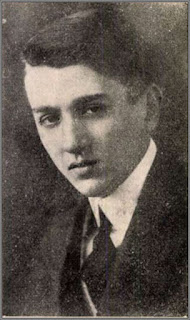Best British Symphonies: 4. Edgar Bainton & Rutland Boughton
The Dutton label has for a second time combined the works of Edgar Bainton (1880 - 1956) and Rutland Boughton (1878 - 1960): after their third and first symphonies respectively, with the BBC Concert Orchestra under the late Vernon Handley in 2007, this successful pairing was followed by three each of their early orchestral tone poems, with the Royal Scottish National Orchestra under Martyn Yates in. This is no coincidence, as the two composers had been friends since their student days, and Boughton - by two years Bainton's senior - had premiered the latter's opera Oithona at his Glastonbury Festival of 1915 (in the absence of the composer who was being held prisoner in Germany at the time).
The two men have a lot in common: the works of both have suffered significant neglect during much time and were only recently experiencing somewhat of a slight renaissance; both have written a number of operas (inspired, to some degree, by their experiences of Wagner's Bayreuth concept of musical drama) which have seen little lasting success - with the sole exception of Boughton's The Immortal Hour; and both have written, in addition to much chamber and choral music, three symphonies, the first in each case featuring the addition of the human voice.
In the end, their lives went down different paths: whilst Rutland Boughton withdrew, following his "fall from grace", into a rural Gloucestershire country retreat, Edgar Bainton, after some years spent travelling, emigrated to Australia for good in 1934 to pursue a fairly successful musical career as a teacher, conductor and composer until his death in 1956. Boughton died shortly after in 1960.
As symphonists, however, the two composers differ significantly from each other: Edgar Bainton's second in D minor and third in C minor (his only two having been recorded) are accomplished, splendid late-Edwardian concert pieces, brilliantly orchestrated and with lots of bravura, a pleasure to listen to from beginning to end.
 |
| Edgar Bainton |
Written in 1939 and premiered in 1941, away from any European wartime hardships, his Symphony No. 2 is cast in one continuous mould comprising a number of episodes roughly representing the classical symphonic form, therefore making it an easily comprehensible work. His Symphony No. 3 dates from the final years of his life and is subsequently much more reserved. By a return to the traditional four movement form, its greater seriousness and maturity are reflected within, as well as through the choice of key. Illness had already taken over the composer's life, and progress on the work was painstakingly slow. Bainton sadly did not live to hear its first performance in 1957.
Rutland Boughton's contributions to the genre pre-date the last two Bainton symphonies and show a more traditional approach: they shy away from any mere effectiveness and are more truthful to their inner meanings and expressions. The First is a tribute to Boughton's Civil War hero, thus entitled Oliver Cromwell, and includes a baritone solo in the last of its four traditional movements. Its instrumentation and musical elaboration show great craftmanship and make this, although written as early as 1905, an already quite progressive piece. Boughton is, however, always at his best in his beloved Celtic metier. And so it is for his Second Symphony, subtitled "Deirdre - A Celtic Symphony" (1926-7), that we discover the true spirit of this remarkable man. Originally concepted as a ballet, the music was reworked into a purely orchestral three-movement symphony, telling the life-and-death "story" of a young Irish princess. The orchestral moods and folkloristic colours, full of drama, qualify this work to stand amongst the greatest British symphonies of the early 20th century.
 |
| Rutland Boughton |
Boughton's Third Symphony could also be called his most traditional one: completed in 1937 and including the regular four instrumental movements, it is much more in the tradition of Elgar, even Tchaikovsky and Sibelius. The musical workmanship is faultless, the formal construction coherent, therefore creating another master piece of the genre. Not surprisingly, when fist performed publicly (Boughton had conducted it once amongst his friends in London) in a 1980ies BBC broadcast under the late Edward Downes, it caused a genuinely positive surprise amongst the audiences and lead to its first recording - jointly with No.2 "Deirdre" - by this conductor being published.
Out of all the symphonies of these two composers, Boughton's Third is the only work until now which was to be recorded a second time, in 1988 with the Royal Philharmonic Orchestra under Vernon Handley (together with the beautiful Oboe Concerto No. 1), although not published on CD until 1999.


Comments
Post a Comment